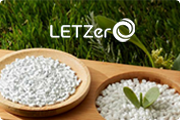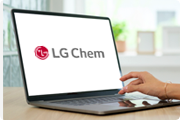Containers from which we drink water and beverages in our everyday lives were changed after the 1960s from glass bottles to PET (Polyethylene Terephthalate), and from aluminum bottle caps to PP (Polypropylene) • PE (Polyethylene).
Among the materials commonly used as materials for bottle caps, HDPE (High Density Polyethylene) has excellent sealing capacities to block off oxygen from the external environment, and it is lighter than aluminum materials, while also being anti-corrosive.
Sealing power is important for bottle caps as it prevents beverages from flowing out, but the ‘open torque’ where it opens when appropriate force is applied, or in other words, the amount of physical force needed for the moment when the cap opens is also important. If the open torque is too high, it will be difficult for weak children or the elderly to open, but if it is too weak, then it will be hard to store the contents properly. Using HDPE makes it possible to open bottle caps with the appropriate amount of force, and it also has outstanding storage stability for the contents, and is thus used as the material for most bottle caps.
HDPE is strong against impact and also has good cold-resistance, while not discharging environmental hormones or chemical substances when sterilizing at high temperatures, and is therefore a safe plastic even when used in microwaves. HDPE is also 100% recyclable, making it possible to reduce environmental pollution just by placing it in the right recycle bin.
LG Chem’s HDPE is produced with high-tech manufacturing methods that use low-pressure polymerization, and it is recognized globally for its excellent processibility and quality. 












![[HDPE] Bottle caps that protects beverages from overflowing](/upload/file/lifein-lgchem/HDPE_main[0].jpg)
![[OLED Polarizer] Secret to Free Viewing Angle with High Visibility from Anywhere](/upload/file/lifein-lgchem/OLED_Main[1].jpg)
![[BR] Must-have for hiking in the fall! Non-slip hiking shoes](/upload/file/lifein-lgchem/BR_Thumbnail[0].png)

